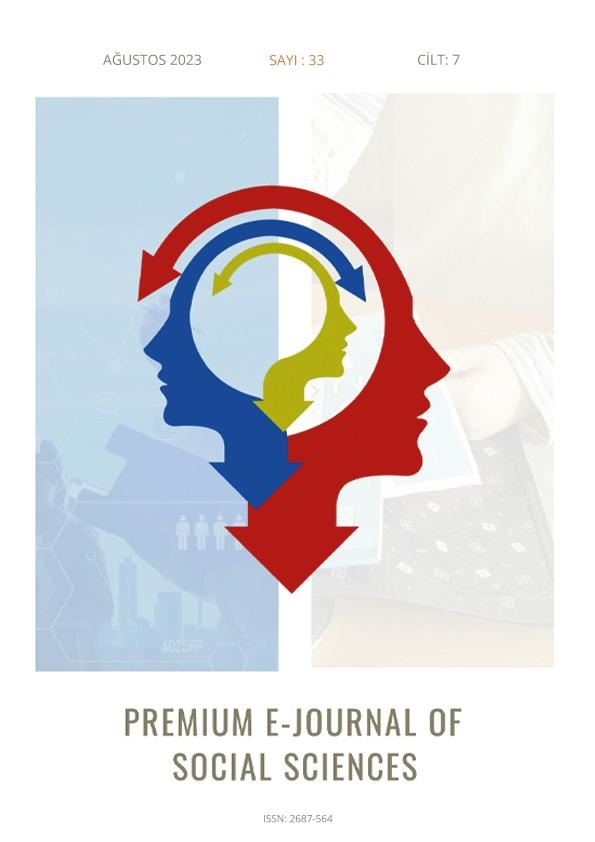Denee Gastronomy House Proposal for the Sustainability of Nigde Migrant Culinary Culture
DOI:
https://doi.org/10.5281/zenodo.8290139Keywords:
cultural heritage, conservation, Immigrant cuisine, Nigde, refunctioning, sustainabilityAbstract
Culinary culture, which has the value of intangible heritage, covers the eating habits, meals, local products and all activities on the food of societies. Geographical diversity in countries, and different ethnic groups are important factors in the enrichment of food culture. Immigrant communities also brought with them culinary culture, which is an element of their cultural accumulation. As a result of the compulsory population exchange between Turkey and Greece, Muslim Turks who settled in various cities of Turkey brought their traditions, eating habits, food, briefly gastronomic values to country. Over time, the immigrants have improved their communication with the local people in the settlements where they have settled, and they have brought many dishes of their own local cuisine to the Turkish cuisine. In this study, a house proposal suitable for carrying out gastronomic sustainable activities has been developed in order to introduce the culinary culture of the immigrants who settled after the population exchange and to transfer it to the next generations through experience. Yeşilburç Village (Denee), which maintains the culinary culture that keeps the traditions alive in the province of Niğde, which was affected by the population exchange suitable for this purpose, was taken as a sample. Considering the role of traditional houses in reinforcing the culinary experience with the production space and the role of traditional houses in reinforcing the user experience, it is suggested that a stone mansion used by the Muslim Turks who settled after the Greeks, who are cultural heritage assets from the sample settlement, should be used as a gastronomy house. Thus, the preparation and presentation of the dishes about the Denee immigrant culinary culture will be transferred to the visitors (exchangers, tourists, gastronomy students, researchers) who are curious about the immigrant gastronomy of Niğde, through the trainers of the local women, and at the same time, it will ensure that a historical stone mansion is kept alive. In the proposal of a gastronomy house with basically research, exercising and education functions; The program consisting of kitchen (cooking), experience workshops (preparation), food and beverage sections, exhibition areas has been prepared. In this context, the spatial dimensions and volumes of the selected building were analyzed in accordance with the architectural preservation discipline and its suitability for reuse. Re-use schemes were presented in the plan and section plane.
Downloads
References
Abdurezzak, A. O. (2014). İşlevsel teori bağlamında yemek kültürünün iletişimsel yönü. Turkish Studies, 9(11), 1-16.
Akhtar, S. (2018). Coğrafi olarak yerinden olma travması. In N. K. Bilen (Ed.), Psikanaliz ve göç: Gitmek mi kalmak mı? (pp. 26-63). İthaki Yayınları.
Arı, K. (1995). Büyük Mübadele: Türkiye'ye Zorunlu Göç (3. Baskı) 1923-1925. Tarih Vakfı Yurt Yayınları.
Arjona-Fuentes, J. M., & Amador-Hidalgo, L. (2017). Olive oil tourism: Promoting rural development in Andalusia (Spain). Tourism management perspectives, 21, 100-108.
Atabey, S., & Çolakoğlu, Ü. (2023). Nüfus mübadelesi sonrasında Girit mutfak kültürünün Türkiye’de sürdürülebilirliği. Türk Turizm Araştırmaları Dergisi, 7(2), 211-224.
Atik, E., & Atik, E. (2020). Türk mutfak kültürüne katkısı bakımından göçler: Selanik mübadilleri üzerine bir araştırma. Güncel Turizm Araştırmaları Dergisi, 4(2), 261-277.
Bucak, T., & Ateş, U. (2014). Gastronomi turizminin il turizmine etkisi Çanakkale örneği. The Journal of Academic Social Science Studies, 28(315-328).
Chambers, I. (2014). Göç, kültür, kimlik. Ayrıntı Yayınları.
Çalışkan, O. (2013). Destinasyon rekabetçiliği ve seyahat motivasyonu bakımından gastronomik kimlik. Journal of Tourism and Gastronomy Studies, 1(2), 39-51.
Deveci, B., Türkmen, S. & Avcıkurt, C. (2013). Kırsal turizm ile gastronomi turizmi İlişkisi Bigadiç örneği. Uluslararası Sosyal ve Ekonomik Bilimler Dergisi, 3(2), 29-34.
Eren, D., & Eroğlu, S. (2019). Niğde İlinin gastronomi turizmi potansiyelinin değerlendirilmesi. 4. Uluslararası Gastronomi Turizmi Araştırmaları Kongresi Nevşehir.
Güçer, Y. (2021). Suyun öte yanından miras lezzetler. Sidas Yayıncılık.
Harrington, R. J. (2005). Defining gastronomic identity: The impact of environment and culture on prevailing components, texture and flavors in wine and food. Journal of Culinary Science & Technology, 4(2-3), 129-152.
Kalkan, A. (2016). Çağdaş Müzecilik, Mutfak Müzeleri ve Turizm. . In O. N. Özdoğan (Ed.), Yiyecek İçecek Endüstrisinde Trendler II Kavramlar Yaklaşımlar Başarı Hikayeleri (pp. 97-112). Detay Yayıncılık.
Kalkan, A., & Gönül, E. (2019). “Deneysel mutfak”, kültürel mirasin yaşatılmasında bir araç olabilir mi? Uluslararası Sosyal Araştırmalar Dergisi, 12(64), 1006-1015.
Kivela, J., & Crotts, J. C. (2005). Gastronomy tourism: a meaningful travel market segment. Journal of Culinary Science & Technology, 4(2-3), 39-55.
Kuzucu, L. (2008). Krifçe'den Yeşilburç'a mübadil yaşamlar. Lozan Mübadilleri Vakfı Yayını.
Moira, P., Mylonopoulos, D., & Kontoudaki, A. (2015). Gastronomy as a Form of Cultural Tourism: The Case of Greek Typology. Fakultet Za Sport i Turizam, 9(2), 135-148.
Ölmez, M. (2021). Yöresel yiyecek ve içeceklerin gastronomi turizmine etkileri: Niğde İli örneği Nevşehir Hacı Bektaş Veli Üniversitesi]. Nevşehir.
Özgüneş, E., & Bozok, D. (2017). Gözde bir destinasyon mutfağı: Bodrum’un yöresel lezzetleri. In Gastronomi Üzerine Araştırmalar. Detay Yayıncılık.
Özkan, S. (2007). 1923 tarihli Türk-Rum nüfus mübadelesinin Niğde’nin demografik yapısına etkisi. Türklük Bilimi Araştırmaları, 21, 169-178.
Savaşkan, Y. (2021). Türkiye’deki gastronomi müzelerine genel bakış. Turizm Çalışmaları Dergisi, 3(2), 61-78.
TDK (2023). Güncel Türkçe sözlük. 10.05.2023 tarihinde https://sozluk.gov.tr/ adresinden erişildi.
Uzel, A. R. (2018). Geleneksel mutfak kültürü ve tarımsal ürün çeşitliliğinin, üniversite öğrencileri beslenme durumu üzerine etkisi. Ege Univ. Ziraat Fak. Dergisi, 55(1), 37-44.
Yazgan Serinkaya, E. (2017). Mutfak kültürünün Gaziantep’in geleneksel konutlarında incelenmesi. ARTİUM, 5(1), 27-41.
Yetiş, Ş. A. (2015). Kapadokya yemek kültürü ve Mustafapaşa Beldesi (Sinasos) örneği. Journal of Tourism & Gastronomy Studies, 3(2), 12-19.
Downloads
Published
How to Cite
Issue
Section
License
Copyright (c) 2023 Premium e-Journal of Social Science (PEJOSS)

This work is licensed under a Creative Commons Attribution 4.0 International License.


